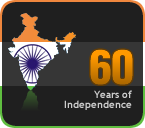
There was a time when vegetables like tomatoes, cauliflowers and cabbage had no place in an orthodox Brahmin kitchen. They were known as ‘English’ vegetables, because they were brought to India by the ruling Englishmen. Today these are household names. There is no rasam made in any kitchen, including the Brahmin kitchen, without tomatoes. Not only for rasam, tomatoes are used for raita (a kind of salad based in yogurt), sambar, and even made into pickles. Green tomato pachadi is a delicacy.
These thoughts flooded my mind as I was cutting tomatoes for a salad at Raji’s place. One of those was about the day in 1942 when my father said that he would teach me how to make cutlets. I was just 15 years old, and unlike today’s children I did not know what a cutlet meant. Anyway I was really happy that my father had taken time from his various activities to teach me to prepare cutlets. He gave me a list of vegetables to be got ready – potatoes, peas, tomatoes, green chillies and ginger. Potatoes and peas were okay with my mother, but she did not allow me to bring the tomatoes into the kitchen, for tomatoes were taboo. I was provided a charcoal portable oven. Following my father’s instructions I prepared the cutlets using sooji (semolina) instead of bread crumbs, and they turned out quite well. My father had tasted the cutlet at a Saturday club dinner, and he wanted his family also to enjoy it. So he got the recipe and helped me to make it.
The tomatoes were used to make sauce to go with the cutlets. Blanch and skin the tomatoes, mash them roughly, add finely cut ginger and green chillies, a dab of sugar and salt, boil for five minutes and the sauce is ready. Later on in life, maybe I remembered this subconsciously and used to make the sauce for my children, adding not just a dab of sugar, but a spoonful, and lots of raisins. How they used to enjoy it!
The Saturday Evening Club was formed by the elite of Trivandrum Society (men only!). Every month on one Saturday, one member would host a grand dinner for the others. There were about 20 members. I vividly remember how the dinner was prepared at our place. First a chef was chosen to cook the menu given by my father. The ‘English’ vegetables played an important part in this dinner. These vegetables were bought from Spencers’s or Koder’s two prominent ‘in’ stores of Trivandrum. My first and only shopping expediton before marriage was going to Koder’s to buy a wedding present for one of my classmates. The food was prepared, not in the kitchen, but in the spacious back verandah, using three sets of bricks to make the stove, and firewood as fuel. A typical menu would be tomato kichadi (raitha), pachadi, aviyal, cauliflower vegetable, cabbage with coconut scrapings, potato roast/stew, onion sambar, rasam, appalam, a sweet, usually mysorpaku, thayir/rasa vadai, a variety of pickles, and of course payasam.
The food was served on plantain leaves, and the guests sat on the floor in front of them to enjoy the meal. We youngsters enjoyed every moment of the day, taking part in most of the activities. The main attraction was the pal payasam(milk and rice pudding), which was almost pink in colour, and next the rasa vadai and the thayir vadai and mysorepaku, and of course the rare dishes made with English vegetabes.
The potato is considered an everyday item today, but in my childhood days, it was considered a rare delicacy. A feast with potato poriyal was summed up as A class. Potato stew pushed back every other dish, and the potato roast was the last word at any feast.
For drinks it was bonji, or lemon juice. Fridges were unheard of. Mud pots were cleaned and filled with water the previous day itself. And to serve the bonji in, silver tumblers were taken out, polished and readied.
I believe even pumpkin was a foreign vegetable, introduced to India by the Portugese, who were called Parangi by us Indians. The pumpkin is known in Thamizh as parangikkai. Like the pumpkin was Indianised in course of time, tomatoes and cauliflower have also become household names.

There was a time when we used to get only seasonal fruits and vegetables. Cauliflower, cabbage, radish are all winter vegetables. As for the Indian vegetables, there are different kinds – lady’s finger in May-June, snake gourd and bitter gourd in August - September, cluster beans in July and brinjals in February, to mention a few.
Now vegetables have no seasons or months – they are available all round the year. When lady’s finger, flat beans and cluster beans were in season, I used to make 'vathal' (pieces parboiled in salt and sun-dried), to be used in off season times. Punjabi women used to sun-dry cauliflower heads and preserve them for the summer days.
One last line. The fruit seller’s cry still echoes in my ears – Bambai ka kela, Allahabad ka guava, Kashmiri sev, Benares ka aam, Hyderabadi angur. (Bananas from Bombay, pears from Allahabad, apples from Kashmir, mangoes from Benares, grapes from Hyderabad) Those days have become bygone days. I miss that Delhi…..




